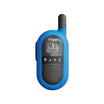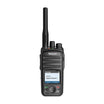What is an Emergency Alert/Call? An Emergency Alert or Call is a critical feature integrated into two-way radio systems, designed for users in distress or life-threatening situations. When activated, usually by pressing an alarm button on the radio, it signals an urgent need for immediate assistance. This alert receives the highest priority within the communication network, ensuring that the distress signal is promptly addressed by the dispatcher or other team members.
How Does the Emergency Alert/Call Function? In two-way radio systems, the emergency button is typically programmed to send an alert signal to all members within a predefined group or directly to a control center. When activated, it can override ongoing communications to ensure the emergency call gets immediate attention. In advanced systems, the alert may also transmit the user’s location, thanks to integrated GPS capabilities, and may initiate an open mic session, allowing the control center to listen in and assess the situation.
Why is Emergency Alert/Call Important in Two-Way Radios? The Emergency Alert/Call feature is vital for ensuring the safety and security of personnel, especially those working in hazardous environments or remote areas. It provides a direct line to help in critical situations, ensuring that users:
- Have a reliable means to signal distress, which is essential in life-threatening situations where immediate response can mean the difference between life and death.
- Can preempt ongoing communications, ensuring their call for help is heard without delay, which is crucial in emergency scenarios where every second counts.
- Feel safer knowing they have a direct link to assistance if needed, which is especially important for workers in isolated or dangerous conditions.
In essence, the Emergency Alert/Call function embodies the safety and responsiveness aspect of modern two-way radio systems, providing a lifeline to users when they need it most. This feature underscores the importance of two-way radios not just as tools for routine communication, but as essential devices for crisis management and emergency response.









































